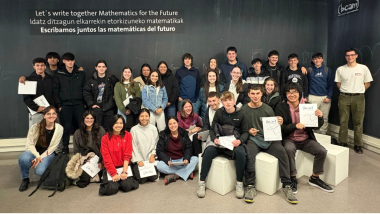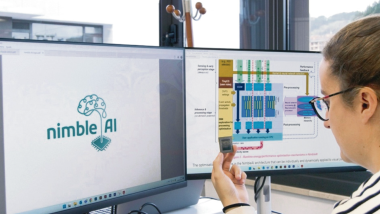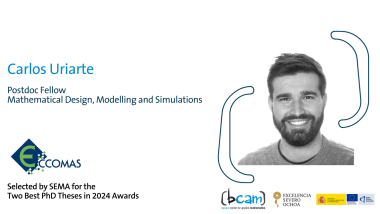Isabella Marinelli will defend her doctoral thesis on Tuesday, December 10th
- The defence will take place in the Faculty of Science and Technology of the University of the Basque Country, located in the Campus of Leioa, at 10:00
Isabela Marinelli graduated in Mathematics from University of Pisa (Italy) in 2012 and she obtained a Master of Science in Mathematics at the University of Trento (Italy) in 2015. She joined BCAM that same year as an intern, and in 2016 she became a PhD Student within the Mathematical Modelling in Biosciences research line.
During her PhD Isabella she did different stays in prestigious universities such as Florida State University (USA), Miguel Hernandez University (Spain) and the University of Trento (Italy). Her doctoral thesis, "Advanced Mathematical Modelling of Pancreatic β-Cells” has been supervised by Dr. Luca Gerardo-Giorda (BCAM) and Professor Richard Bertram of the University of Florida (FSU).
On behalf of all BCAM members, we would like to wish Isabella the best of luck in her thesis defence.
Title: Advanced Mathematical Modelling of Pancreatic β-Cells
Insulin-secreting pancreatic β-cells are responsible for maintaining the whole body glucose homeostasis. Dysfunction or loss of β-cell mass results in impaired insulin secretion and, in some cases, diabetes. Many of the factors that influence β-cell function or the insulin exocytosis, however, are not fully understood. To support the investigation, mathematical models have been developed and used to design experiments.
In this dissertation, we present the Integrated Oscillator Model (IOM) that is one of the mathematical models used for the investigation of the mechanism behind bursting activity that underlies intracellular Ca2+ oscillations and pulsatile insulin secretion. The IOM describes the interaction of the cellular electrical activity and intracellular Ca2+ with glucose metabolism via numerous feedforward and feedback pathways. These interactions, in turn, produce metabolic oscillations with a sawtooth or pulsatile time course, reflect- ing different oscillation mechanisms. We determine conditions favorable to each type of oscillations, and show that the model accounts for key experimental findings of β-cell activity.
We propose several extensions of the model to include all the main elements involved in the insulin secretion. The latest and most sophisticated model describes the complex metabolism in the mitochondria and the several biological processes in the insulin exocytosis cascade. The model, also, captures the changes in the β-cell activity and the resulting amount of secreted insulin in response to different concentrations of glucose in the blood. The model predictions, in agreement with findings reported in the experimental literature, show an increase of insulin secretion when the glucose level is high and a basal-low insulin concentration when the glucose level decreases.
Finally, we use the new model to simulate the interaction among β-cells (through gap junction) within the same islet. The simulations show that the electrical coupling is sufficient to synchronize the β-cells within an islet. We also show that the amplitude of the oscillations in the insulin secretion rate is bigger when the β-cells synchronize. This suggests a more efficient secretion of insulin in the bloodstream when the cells burst in unison, as it has been observed experimentally.
Related news
About the center
About the center




